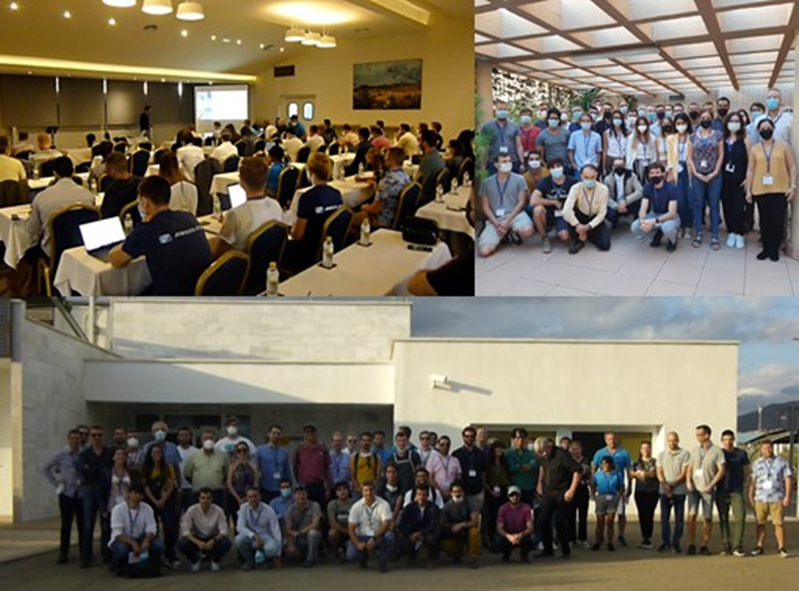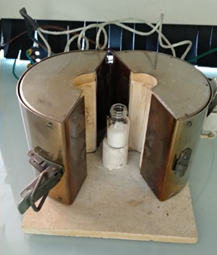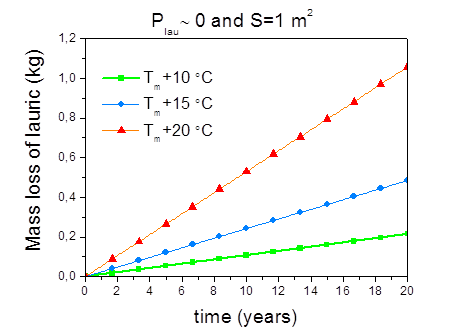

UNIDAD DE APLICACIONES SOLARES TÉRMICAS
Solar Facilities for the European Research Area - Third Phase (SFERA III)
Participants: CIEMAT (Spain), CNRS (France), ENEA (Italy), DLR (Germany), CEA (France), UEVORA (Portugal), ETHZ (Switzerland), IMDEA (Spain), CYI (Cyprus), Fraunhofer (Germany), LNEG (Portugal), METU (Turkey), UAL (Spain), EURO (France), ESTELA (Belgium).
Contact: Ricardo Sánchez, ricardo.sanchez@psa.es
Funding agency: European Commission, H2020-INFRAIA-2018-1.
Background: Research infrastructures (RIs) are facilities, resources and services that are used by the research communities to conduct research and foster innovation in their fields. They play an increasing role in the advancement of knowledge and technology and their exploitation. By offering high quality research services to users from different countries, by attracting young people to science and by networking facilities, RIs help to structure the scientific community and play a key role in the construction of an efficient research and innovation environment. Because of their ability to assemble a ‘critical mass’ of people, knowledge and investment, they contribute to national, regional and European economic development. RIs are also key in helping Europe to lead a global movement towards open, interconnected, data-driven and computer-intensive science and engineering.
Objectives: The SFERA-III project aims to engage all major European Solar Research Institutes, with relevant and recognized activities in the Concentrating Solar Thermal (CST) technology field, into an integrated structure, operating a unique set of Concentrating Solar Thermal (CST) RIs to promote innovative research, to improve services offered by CST research infrastructures and to train researchers and engineers on the CST technologies. In this project, both academia and industry users are targeted.
Achievements in 2021: During this year, CIEMAT successfully organised and coordinated several General Assembly, Management Board, and Access Manager meetings for the successful implementation of the project. Also, this year, CIEMAT organised and lunched the third call for proposals for access to the installations offered in the SFERA-III project and coordinated the evaluation of the proposals received, including the organisation of the User Selection Panel meeting for the discussion of the scores.
In WP1 PSA organized the 2nd SFERA-III Summer School and Doctoral Colloquium held in Almería on 5-6 October and 6-8 October 2021, respectively (Figure 1). The Summer School was devoted to “Solar Process Heat Applications and Water Solar Desalination “. The Doctoral Colloquium was organized in 5 sessions: Energy storage & solar fuels; modelling and control strategies; Solar receivers; Solar field; and Solar Energy, water, food nexus. A visit to the PSA was organised on the afternoon of 6 October to give the opportunity to both the attendees of the Summer School and the attendees of the Doctoral Colloquium to join the visit. PSA also collaborated in 2021 with DLR in the organization of the 2nd Training Course for the Industry that will be finally held in April 2022 due to the Covid pandemic. The title of this training course is “Optimization of CST plant output by optical and thermal characterization and target-oriented O&M”.

In WP3, CIEMAT, as leader of the task for the promotion of long-term sustainability, but also as responsible of the ERIC, led the work to finalise the final version of the statute of the EU-SOLARIS legal entity and the STEP 2 submission to become an ERIC. EU-SOLARIS was submitted to the hearing of ESFRI/EC committee on 28 April 2021. While in September 2021, the Spanish Ministry of Science and Innovation submitted to the European Commission the STEP2 request (prepared by CIEMAT) for the recognition of EU-SOLARIS as an ERIC, having Spain, France, Germany, and Cyprus as members of the consortium, see section 12 for more details.
CIEMAT coordinates WP6 which is entitled Development of Test Procedures for Materials and Components of Thermal Storage Systems. Closely linked to the ACES2030 regional programme, in 2021 CIEMAT validated the HDR oven (Figure 2.a) for testing PCM degradation in terms of evaporation/gas emission and formation of coloured products. This oven has been used for studying the degradation of lauric acid under isothermal and stress conditions (T=100 - 200°C; 1 h – 2 h) (Figure 2.b). By means of kinetic calculations, mass loss over time due to evaporation was predicted giving as a result that, from the evaporation point of view, lauric acid is validated as PCM (Task 6.2). Discussions on the test procedures for prototype testing continue as well as on the definition of KPIs from experimental results (Task 6.3). In collaboration with the Thermal Storage Working Group of SolarPACES Task III, which is also coordinated by Thermal Energy Storage Unit experts, a round robin test for a pressure transmitter has been proposed and accepted. This pressure transducer will be provided thanks to the collaboration of TES Unit experts have with a manufacturer (Task 6.4).


CIEMAT’s activity within Task 7.1 (WP7) has been focused on the definition of best procedures for exegetic analysis of MED processes. In addition, as Task 7.2 leader, in parallel with other participants, we have been working on the preliminary testing of polymeric materials for MED tube bundles. Particularly, CIEMAT is working on the establishment of the technical specifications for a new experimental facility (MED) using polymeric-based heat exchangers for MED process. Parallel to the work performed on the MED process, CIEMAT, together with the other partners, is also conducting work towards the development of procedures for Membrane Distillation (MD) and Forward Osmosis (FO) membranes testing. For the achievement of this goal, the assessment of new MD modules assisted by vacuum is being examined. In the frame of Task 7.3, CIEMAT has proposed tentative guidelines towards the performance evaluation standardization of DWT pilot plants (solar membrane distillation, nanofiltration, multi-effect desalination, CPC NOVO75). Special attention has been given to the definition of control loops and instrumentation in order to achieve the best procedures defined within Task 7.1 for the case of solar applications. Within Task 7.4 CIEMAT has been working on the development of in-house simulation software mainly related with the performance assessment of solar thermal cogeneration plants (CSP+D) coupled to MED and RO processes. Large optimization operations for thermoeconomic studies have required the development of simplified correlation models for MED plants to be able to run several thousands of yearly simulations within such optimization operations. Regarding membrane distillation, empirical correlations for GOR have been proposed for the new technology of multi-envelope spiral-wound air gap membrane distillation modules in conventional configurations.
IN WP8, CIEMAT has been involved in activities in tasks 8.2 and 8.3. Specifically, in Task 8.2, Tests procedures to assess the performance of materials for solar fuel production, CIEMAT has taken part in the creation of a database to guide the efforts of this task to standardise the techniques and procedures for monitoring and evaluating some key performance indicators of reactors. In Task 8.3, Dynamic Control and Automation of Solar Fuel Reactors, CIEMAT has been working on developing advanced model-based algorithms to control solar fuel systems under solar transients based on H2 production results obtained with a 100-kW cavity reactor concept. In 2021 a modification of the control scheme based on development of a feedback linearization technique is carried out. The main idea behind the feedback linearization technique is to treat non-linear systems as linear ones by means of algebraic transformations and feedback. A control design proposed will be tested in simulation: a feedback linearization control is combined with an optimization problem. The reactor temperature is obtained with a lumped-parameter model based on physical equations.
WP9 is focused on improving services to develop and test high performance solar receiver and concretely task 9.2 deals with improving infrared temperature measurements of solar receivers. The contribution of CIEMAT in this sense has consisted in the participation in a round robin test among different partners to measure and calculate thermal emittance values of absorber samples with different properties, composition and geometries in order to compare the results obtained. In this test, thermal emittance direct measurements and indirect calculation from hemispherical reflectance measurements by using different equipment and calibration standards have been compared. While in Task 9.3 “Airbone IR measurements assessment”, the Line-Focus Solar Thermal technologies unit has analysed the results of a preliminary outdoor test campaign to determine how meteorological variables influence the measurement of the glass envelope temperature of HCEs using IR cameras, comparing laboratory and outdoor data when the absorber temperature and the vacuum pressure in the annulus of the receiver are coincident. A procedure to perform a second outdoor test campaign was decided and more results will be obtained in 2022.
In WP10, specifically in Task 10.1 “Enhancement of sensor monitoring/calibration and measurement accuracy of laboratory test benches of RI”, the Line-Focus Solar Thermal technologies unit has patented a device to measure forces and moments being applied on rotating and expansion performing assemblies of parabolic troughs. A first prototype of the system, which incorporates load cells, has been manufactured at PSA. Besides, a lab test bench has been prepared with the aim to calibrate the measurement device patented and manufactured before its use in a solar field. It is planned to have the system completely operative in 2022. Also, in this task 10.1, we have participated in the definition and preparatory work in the PSA’s laboratory of HCEs qualification of a new round robin test for increasing the quality of service of test benches for parabolic trough receivers heat lost measurement. This round robin will be developed during 2022. Additionally, in Task 10.1.A, the Materials for Concentrating Solar Thermal Technologies Unit has participated in a Round Robin Test of soiled mirrors (with CEA, Cyprus Institute, Fraunhofer ISE, IMDEA and Evora University) Artificially soiled mirrors were prepared with sand from Negev and Almería and 6 samples were optically characterized in the OPAC laboratory, in cooperation between CIEMAT and DLR, using a spectral specular reflectometer (S2R), a portable specular reflectometer (D&S 15R-USB), the Tracs device the parallel goniophotometer prototype (MIRA), and a spectrophotometer (Perkin Elmer Lambda 1050). According to the results, the soiled samples did work to some extent but for more robust results a presential workshop with handheld devices seemed essential and/or measurements with robust calibration coupons.
It is also worth mentioning the coordination of WP11, which is devoted to the detailed design of the e-infrastructure that will connect the main European R+D centres involved in concentrating solar technologies. During the year, the list of e-infrastructure functionalities and services has been established, as well as the state of the art, configuration, structure and O&M specifications of the future e-infrastructure.